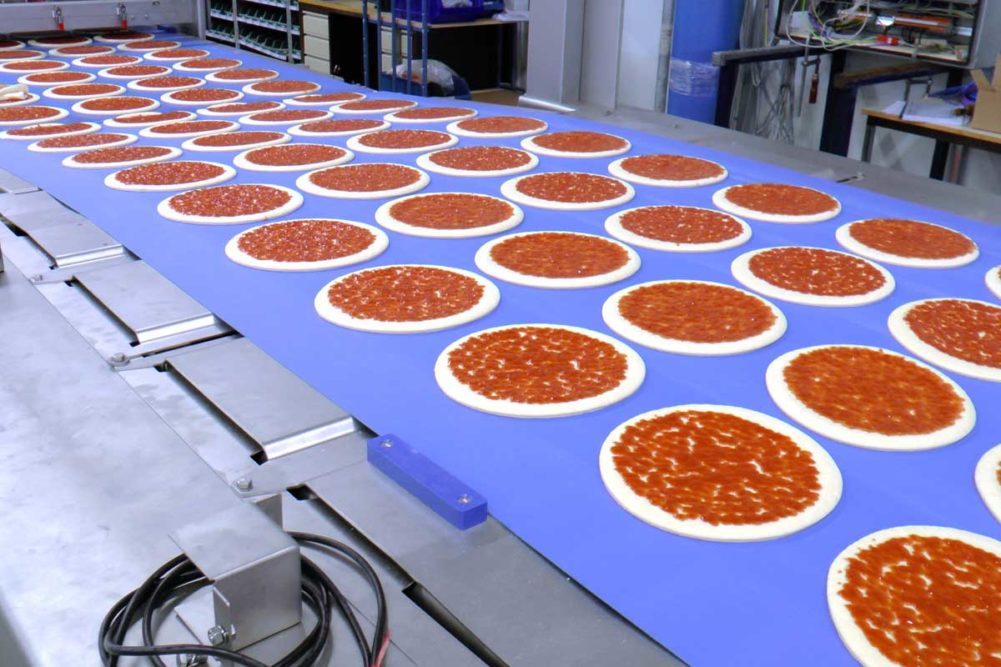There are a couple of approaches to pizza makeup. The dough can be sheeted and cut, or divided, rounded and pressed. Both methods offer distinct advantages.
Rademaker USA provides a variety of processes to select from depending on the crust type desired. A low-stress process, said Eric Riggle, president, Rademaker USA, will create a crust that has more of an open structure and artisan appearance. The company’s low-stress options include the Low-Stress Sheeter and Double-Chunk Sheeting System.
Moline Machinery also offers a variety of sheeting and laminating systems for pizza shells. Thinner doughs sometimes require laminating to create a crispy crust. Having the option to add lamination increases versatility on a pizza line, whether it’s a dedicated system or a line that needs to make a wide variety of crusts.
“We try to future-proof these lines,” Mr. Moline said. “It’s hard to react fast enough from a large capital projects standpoint to meet an emerging trend. So we’re tasked with making the lines as flexible as possible so they can meet a trend quickly without having to invest in equipment again.”
By adding a laminating system, bakers can handle anything from a lower moisture dough like a thin crust to a higher hydration dough that can bypass the laminating system if it’s not required. Moline can also add an intermediate proofing system to give dough resting time prior to final sheeting and cutting.
Bakers may want an extruder that produces a tighter grade of dough sheet. Moline’s three-roll extruder does this, and with its dough tensioning system, Moline can protect delicate doughs like cauliflower crusts from unwanted pulling or stretching that can result in tearing.
“We can start wide, with or without laminating,” he said. “We can extrude on the first leg of the system or the last leg of the system. Starting wide helps minimize the amount of reduction you need to do for a thin crust.”
To achieve crispier thin crusts, bakers need a tight grain structure. The stiffer that structure, the harder it is to reduce on a sheeting line. Moline’s extruder allows bakers to get closer to a targeted thickness from the start.
For softer doughs, Fritsch’s SoftProcessing technology protects the dough with a satellite head and eight rollers coated with anti-adhesive.
“The mechanics of Fritsch lines are also designed to ensure the dough is subjected to minimum stress at all times,” Mr. Zielsdorf said. “Careful production of the dough sheet in the Fritsch satellite head ensures that the delicate structures in the dough, developed during fermentation, remain undamaged during this important work step.”
High-hydration, airy doughs are rising in popularity due to their artisan appearance. Coen Nikkels, manager of marketing and business development for Rondo, said the Midos 4-roll dough band former can process stiff and soft doughs with up to 85% hydration levels. The four independently driven rollers and their respective changeable spacing allow for almost any dough to be processed into a continuous dough band.
“The band is reduced to the required final product thickness in the sheeting section using spiral cross rollers and gauging stations,” Mr. Nikkels said. “The product is then cut and/or stamped using different sets of knives and cutters depending on the final shape.”
This article is an excerpt from the September 2020 issue of Baking & Snack. To read the entire feature on pizza technology, click here.






